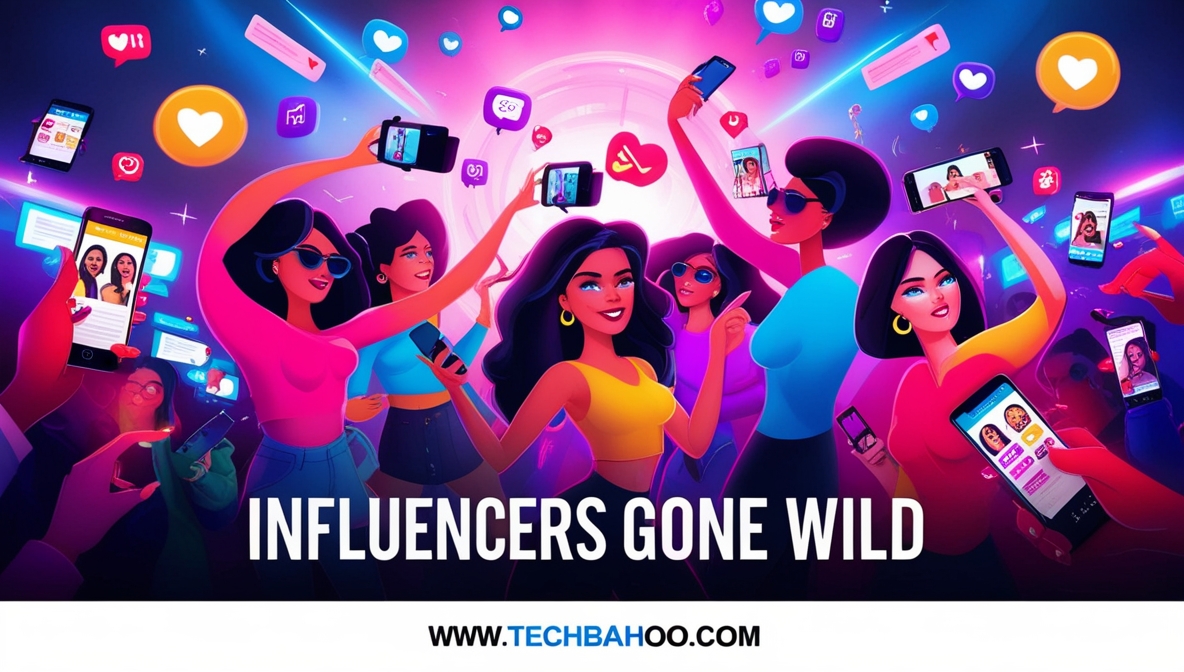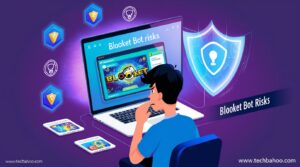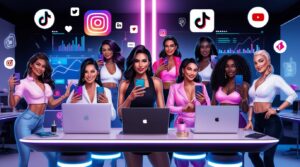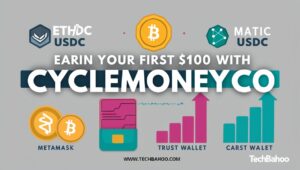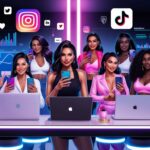Influencers Gone Wild is not just about chaos online; it’s about how social media influencers like Logan Paul, Kylie Jenner, James Charles, David Dobrik, and Tati Westbrook changed what fame means. The mix of viral content, brand collaborations, and public backlash shows how the line between entertainment and controversy has blurred.
This article reveals how influencer culture, mental health, and brand trust interact in a world ruled by social media algorithms. It also explores FTC guidelines, advertising regulations, and ethical responsibility, showing how authenticity and transparency now define success in the influencer economy.
The Rise of Influencers in Social Media
Social media influencers began as everyday creators sharing moments online. Platforms like Instagram, TikTok, and YouTube gave them global stages. Soon, macro-influencers with millions of followers and micro-influencers with smaller, loyal audiences became marketing powerhouses. Influencer marketing grew into a billion-dollar digital transformation, reshaping how brands connect with consumers through sponsored posts, product placements, and affiliate marketing.
The most successful creators turned their online personas into empires. Kylie Jenner used Instagram to build Kylie Cosmetics; Logan Paul leveraged YouTube and Patreon to expand his empire; and James Charles made beauty tutorials into global campaigns. These creators became the face of a new digital identity, where ROI (Return on Investment) depends on audience engagement metrics and emotional connection.
What Does “Gone Wild” Mean in This Context?
In influencer culture, “gone wild” means breaking boundaries for attention. It might be a daring stunt, emotional rant, or risky collaboration that grabs the internet’s eyes. Attention-seeking behavior drives many of these moments, often fueled by FOMO (Fear of Missing Out) and the validation loop created by likes and views. The more wild the act, the stronger the social validation and algorithmic boost.
Influencers Gone Wild moments reflect both creativity and crisis. When David Dobrik faced public scrutiny for dangerous pranks, or James Charles battled cancel culture over disputes with Tati Westbrook, we saw how fragile online reputation management can be. Going wild may bring fame overnight but also risk public opinion, brand alignment, and ethical responsibility.
Influencers Gone Wild: A Cultural Phenomenon
The wave of viral phenomena from wild influencer acts shapes society itself. Influencer psychology explains it as the need for attention, belonging, and power in the digital community engagement ecosystem. These creators influence how millions behave, dress, and think. When Logan Paul filmed his infamous YouTube controversy, he didn’t just face public backlash he sparked a global debate about social media ethics and cultural appropriation.
This phenomenon reveals our cultural curiosity about fame. People are fascinated by extremes the rise, the fall, and the redemption. These wild stories show how internet fame, parasocial interaction, and audience engagement fuel modern celebrity culture. Wild content isn’t just entertainment; it’s social commentary.
The Business of Influencer Gone Wild
The business behind wild moments is massive. Brands use influencer partnerships, co-branded campaigns, and sponsored content to tap into viral buzz. But brand trust is fragile. If a wild stunt goes wrong, brand partnerships can collapse overnight. ROI drops, public perception shifts, and regulatory compliance risks emerge. Companies now study audience engagement metrics and influencer authenticity before signing deals.
Many influencers monetize their wild moments through OnlyFans, Patreon, or merchandising strategies. A viral stunt can lead to content monetization spikes. Yet, without ethical influencer practices, short-term fame becomes long-term damage. The smart creators now balance risk and brand safety, turning hype into sustainability.
Controversies Surrounding Influencers Gone Wild
Controversial influencer behavior often invites cancel culture, lawsuits, and public backlash. Defamation laws, intellectual property rights, and consumer protection laws all apply here. When Tati Westbrook and James Charles clashed online, millions tuned in, proving how drama drives viral marketing. But the price is emotional exhaustion, depression, and loss of brand alignment.
Legally, the Federal Trade Commission (FTC) enforces sponsorship disclosure rules. Influencers must label paid partnerships transparently under FTC guidelines. Violating these can mean penalties and damaged trust. Ethical content creation means being open, responsible, and compliant values that protect both brands and creators in the long run.
Consequences of Influencers Going Wild
When influencers go too far, their online reputation can collapse. The internet rarely forgets. For some, like Logan Paul, redemption came through apologies and reinvention. For others, the damage lasted years. The balance between authentic content creation and shock value defines survival. Audience trust and brand alignment depend on humility, not just visibility.
Wild fame often fades fast. Algorithms change, and social media companies like Instagram, TikTok, and YouTube constantly update rules. Those who evolve focusing on authenticity and purpose stay relevant. Those who chase chaos often vanish under public scrutiny and burnout.
Psychology Behind Influencers Gone Wild Behavior
Influencer psychology explains why creators seek viral fame. Many experience psychological pressure, anxiety, and self-worth issues tied to likes, shares, and comments. This validation loop fuels attention-seeking behavior. When engagement drops, some creators escalate actions to recapture fame, reinforcing the Fear of Missing Out (FOMO).
The internet becomes both playground and trap. Parasocial interaction blurs reality; followers feel entitled to judge influencers’ personal lives. Over time, burnout, emotional exhaustion, and depression set in. Fame turns from dream to burden. Mental health support and self-care are essential for long-term success in the influencer economy.
Audience Engagement – Why Do We Watch?
We watch because it feels real. Viral content delivers excitement, surprise, and connection. The audience’s curiosity turns into fuel for social media virality. It’s entertainment mixed with empathy viewers see themselves in influencers’ highs and lows. The thrill of wildness meets the comfort of shared humanity.
At the same time, public opinion shapes these moments. We criticize and celebrate them simultaneously. Cultural curiosity and social commentary make influencers both mirrors and provocateurs. Watching someone go wild online is a reflection of our collective fascination with digital power, performance, and vulnerability.
Influencers Gone Wild Across Different Niches
In fashion and beauty, wild creativity often drives success. James Charles redefined beauty content with bold experimentation. Kylie Jenner built an empire by blending luxury with relatability. These macro-influencers show how far one can push aesthetics before crossing into online controversy. The wildness sells but only when backed by authenticity and brand trust.
In fitness and lifestyle, David Dobrik and other YouTube influencers used extreme stunts to captivate audiences. The blend of humor, danger, and aspiration keeps fans hooked. But ethical responsibility and safety matter more than clicks. Long-term success depends on balancing excitement with responsibility.
The Future of Influencers Gone Wild
The next era of influencer marketing will focus on authentic content creation, transparency, and mental health awareness. Micro-influencers and nano-influencers will dominate because they feel more relatable. Brands will favor meaningful influencer partnerships that align with purpose over spectacle.
Meanwhile, social media algorithms are evolving. They’re rewarding trust, not chaos. Influencers who invest in digital community engagement, consistent storytelling, and regulatory compliance will thrive. Those who depend only on shock value may fade as platforms promote ethical marketing and safer digital spaces.
Regulatory Aspects and Legal Compliance
Federal Trade Commission (FTC) oversight keeps influencer marketing accountable. Influencers must obey advertising regulations and sponsorship disclosure rules. Failing to mark a post as paid can trigger fines. As social media companies mature, stricter regulatory compliance and transparency laws are expected.
Creators also face defamation laws, intellectual property rights issues, and consumer protection laws. Staying informed and ethical safeguards both creators and brands. Future regulation will focus on authenticity, disclosure, and mental health protection ensuring that digital fame remains fair, safe, and responsible.
Conclusion
The phenomenon of Influencers Gone Wild reveals the pulse of modern influencer culture—a mix of ambition, creativity, and chaos. From Logan Paul’s redemption arc to Kylie Jenner’s billion-dollar brand, from James Charles’s comebacks to David Dobrik’s controversies, the line between fame and failure is razor-thin.
In the evolving influencer economy, success belongs to those who balance authenticity, ethical responsibility, and mental health. As algorithms shift and audiences mature, the influencers who stay genuine, transparent, and grounded will define the next chapter of digital media trends one where going wild doesn’t mean losing control, but daring to evolve.
💬 FAQs Schema Ready Section
1. What does “Influencers Gone Wild” mean?
The phrase Influencers Gone Wild describes social media influencers who break norms or behave unpredictably for attention. It often involves viral stunts, controversial influencer behavior, or emotional outbursts that boost their online fame and audience engagement.
2. Why do influencers engage in extreme or “wild” behavior?
Many creators act out due to FOMO (Fear of Missing Out), attention-seeking behavior, and the validation loop from likes and followers. Influencer psychology shows that online fame can create anxiety, pressure, and the urge to stay relevant in fast-changing social media platforms.
3. What are some examples of influencers pushing boundaries?
Well-known names like Logan Paul, James Charles, and David Dobrik have faced public backlash for wild or risky content. These acts often spark viral trends, cancel culture, and debates over ethical influencer practices.
4. Are there risks associated with extreme influencer content?
Yes. Wild content can harm an influencer’s online reputation, lead to brand trust loss, and even invite legal issues under FTC guidelines or consumer protection laws. Many also suffer from mental health issues like burnout and emotional exhaustion.
5. How do brands choose the right influencers to collaborate with?
Brands prefer influencers with proven authenticity, strong audience trust, and positive engagement metrics. They analyze past brand collaborations, regulatory compliance, and ethical responsibility before signing influencer partnerships.
6. What regulations govern influencer marketing?
The Federal Trade Commission (FTC) enforces advertising regulations and sponsorship disclosure rules. Influencers must clearly mark paid partnerships and affiliate marketing posts. Failure to comply can result in penalties or damaged credibility.
7. How can influencers maintain authenticity while partnering with brands?
Influencers can stay authentic by promoting products they truly believe in, maintaining transparency in marketing, and creating authentic influencer branding. Honest storytelling builds consumer trust and long-term success.
8. What future trends can we expect in influencer marketing?
Expect growth in micro-influencers and nano-influencers, more focus on ethical marketing, and smarter algorithm changes. The future favors influencer authenticity and mental health awareness over shock value.
9. How can influencers protect their mental health?
They should practice self-care in social media, set digital boundaries, and seek mental health awareness support. Balancing fame with rest prevents burnout and helps sustain long-term digital content creation.
10. How can audiences distinguish between authentic and performative influencer content?
Authentic content feels honest and personal. Performative posts seem exaggerated or sponsored without disclosure. Viewers can look for FTC disclosure requirements, genuine tone, and consistent storytelling to gauge online authenticity.
